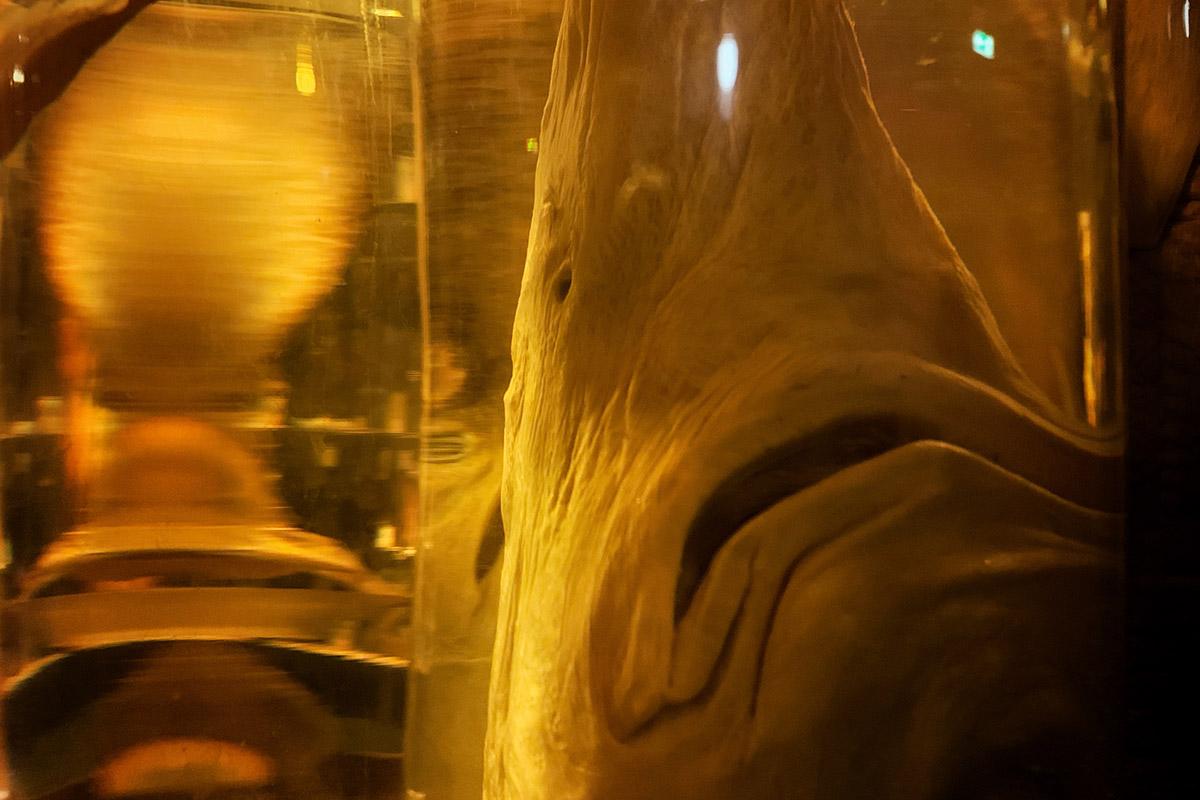The Giant Chinese paddlefish officially declared extinct at the beginning of 2020. The collection, as the research infrastructure of the Museum für Naturkunde Berlin with its 30 million objects, is home to many extinct species - including the Giant Chinese paddlefish. This is on display for all to see in the wet collection. This valuable object is now available to current and future researchers and serves as an ambassador to promote nature today and in the future.
"We're in the middle of the sixth great mass extinction in the history of the earth. With these creatures we share this earth and nature carries our wealth. We must act now so that this development does not become the eternal mark of Cain in our society," says Johannes Vogel, Director General of the Museum für Naturkunde Berlin.
Psephurus gladius (v. Martens, 1862), Giant Chinese paddlefish, ZMB 11002, 1190 mm total length, Ning-po-fu at the lower reaches of the Jün-ho, International Fishery Exhibition Berlin, 1880. This is the short description of one of the most valuable specimens of the fish collection of the Museum für Naturkunde Berlin, completely understood probably only by an insider. Eduard von Martens, a later well-known Berlin zoologist, had first discovered this strange fish for Western science on March 3, 1861 "in the house of a Chinese fishtrader in Woosung" during the Prussian East Asia expedition. In the description he recognized its close relationship to its American counterpart, the paddlefish Polyodon spathula from the Mississippi.
In 2010, when the East Wing with its valuable wet collection opened, the Chinese giant paddlefish was considered almost unsalvageable, as further dam construction threatened to cut off the spawning grounds near Yibin on the upper reaches. Although protected in China at the time, intensive fishing, water pollution and migration obstacles brought it to the brink of extinction, as did the species of the European rivers. Little is known about the way of life of the Chinese giant paddlefish. It likes to eat larger fish - not plankton like its relative. Its narrower forehead appendix was, as with the Americans, densely filled with electrical sense organs that helped in the search for prey. Like a balancing rod, the spoonbill's long "nose" also prevented it from turning over caused by the sudden change in water resistance when its mouth was open at the underside of its head.
Visible to everyone, the specimen in the wet collection in the east wing is preserved for all time as a reminder and object of research. Its origins date back 200 million years. According to Science Magazine, the last specimen of the Chinese giant paddlefish died between 2005 and 2010 and the species is officially considered extinct in 2020.
Picture:
http://download.naturkundemuseum-berlin.de/presse/ChinesischerSchwertstör
The pictures can be used free of charge for reporting in connection with the press invitation by stating the copyright (photographer + Museum für Naturkunde Berlin).
